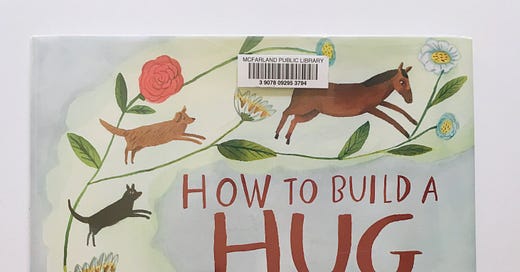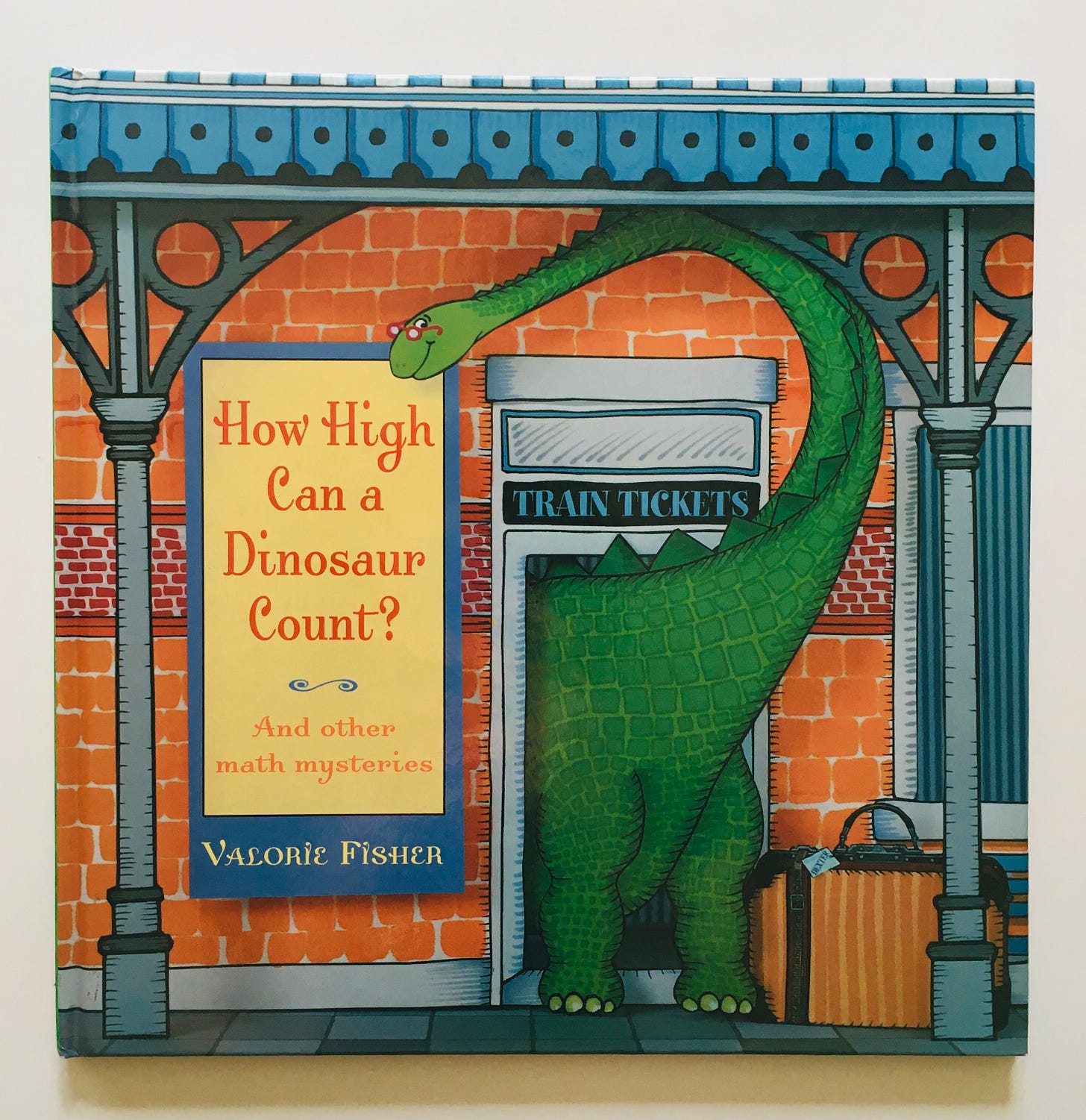Hi folks. What a difference a week makes, eh? 🥳 🙌
If you’re looking for books by or about our first female vice president, there are at least three (I’m not including YA titles, as I haven’t gotten my hands on them yet):
Kamala Harris: Rooted in Justice by Nikki Grimes
Superheroes Are Everywhere by Kamala Harris (I wish every kid could have this one — it’s an empowering read)
Kamala and Maya’s Big Idea by Meena Harris
I don’t often buy new books but as I wrote in only the second issue of this newsletter: representation really, really, REALLY matters. Regardless of your politics, regardless of your feelings about the outcome of the 2020 presidential election, regardless of all the nuances (and I know they are there), it’s my belief that children (girls AND boys — my friend Vanessa did an excellent job of spelling out the “yes, and” of this in her newsletter from November 9) need to see this woman in this political office. Some titles, for important reasons, are worth spending the money on.
Totally unrelated! A correction to last week’s Thanksgiving issue: I wrote that I Know and Old Lady Who Swallowed a Pie by Alison Jackson is not about, or even mentions, Thanksgiving. No idea how I made that mistake, but given that I have been asked to sing that book approximately 156 times since then, it has been duly rectified.
Now, onwards into this issue where, for the first time, all the titles are from the 21st century…
How to Build a Hug: Temple Grandin and Her Amazing Squeeze Machine by Amy Guglielmo and Jacqueline Tourville, illustrated by Giselle Potter (2018)
I don’t have a long list of heroes, but Temple Grandin is definitely on it, so when I discovered this title I knew immediately I’d be putting it on hold at the library and sharing it with my kids. Instead of being the story of Grandin’s life (itself a remarkable one), it’s a very specific piece of it — the ongoing dilemma of how to receive touch, namely a hug, in a way that felt good to her. If you don’t know anything about Grandin, she has autism, so to her, as the book explains, “hugs felt like being stuffed inside the scratchiest sock in the world.” Still, she could see that other people were comforted and calmed by hugs, and she wanted to be held, too. Both the authors and illustrator do a great job here of bringing disparate pieces from different moments in Grandin’s life puzzle together — the reader sees young Temple crawling under the couch cushions and asking her sister to sit on top of them (seeking that deep pressure input), sees her engineering ingenious solutions on her aunt’s farm, sees her observing a ranch hand as he performs a checkup on a calf — all of which come together to help older Temple single-handedly design and build her own device, which others suggest is a “snuggle apparatus, a squeeze-a-majiggy, a squish box” but which Temple knows is “a hug machine.” Kids don’t need to know anything about Grandin (a genius whose innate understanding of animal behavior and innovative designs for the handling of livestock deeply and permanently changed the cattle industry, if not agriculture as a whole), and, astonishingly, neither the word “autism” nor any mention of Grandin’s differences come up in this book: it is simply a masterful glimpse into one woman’s life, and does a beautiful job not only sharing a unique and interesting story, but normalizing our basic — and sometimes very individual — needs.
Mommy’s Khimar by Jamilah Thompkins-Bigelow, illustrated by Ebony Glenn (2018)

If I had to make a Top 5 Books for 2020 (should I make that list????) this title would unquestionably qualify. Not only is Ebony Glenn a fun and talented new illustrator to watch — her images are bright, uplifting, and strangely Disney-esque (like I checked the publisher, to see if this was in fact published by Disney; it is not) — Thompkins-Bigelow has written the perfect match of a story to accompany her colorful, cheerful vibe. This is a sweet glimpse into the life of a little girl who is entranced by her mother’s colorful khimars. She revels in the sheer number of headscarves in her mother’s closet, she delights in their many colors and details, and she transforms when she puts them on herself, becoming a queen with a golden train, a mama bird, a superhero in a cape, and the reader gets to join her in her joy that fairly jumps off the page as she remembers her mothers smells, hugs her grandmother, receives compliments from others at her mosque. At the end of the day she takes all these experiences — along with that infectious joy and her mother’s love — with her as she dreams. Aside from being a pleasure to read, there are some gentle teachable moments here — when she hugs her grandmother she explains, “Mom-Mom doesn’t wear a khimar. She doesn’t go to the mosque like Mommy and Daddy do. We are a family and we love each other just the same;” when her Arabic teacher exclaims, “Beautiful hijab!,” the reader is helped to understand that “hijab” is the word the teacher uses for “khimar” — that are a natural part of the narrative, and wonderful in their own right. This is a truly lovely, warm and merry story. We need more books like this one.
Eating Up Gladys by Margot Zemach, illustrated by Kaethe Zemach (2005)
My younger child (now four to her sister’s six) has been nuts for this book ever since she could sit through reading something with more than five words on a page — and I’m convinced it’s because it’s the story of two younger sisters who win out, just a little, over the older one. Written and illustrated by two sisters, here the reader meets Gladys — the oldest, always in charge — Hilda, Rose, and the baby. Sometimes Gladys is nice to her sisters, but more often she’s bossy, and since she also yells and stomps, Hilda and Rose usually do what she wants. Until one day, Hilda has had enough, and comes up with a plan: “Let’s get rid of that bossy girl! Let’s have her for dinner, and be done with her forever!” Rose, always agreeable (her signature, repeated line is, “That’s for sure!”) is immediately on board and they proceed to work their plan, preparing the kitchen and even informing Gladys, who predictably blows her top — so much so that she falls into the large cooking pot her younger sisters have readied for her, and has to stay there all evening, no longer in charge, and, the reader assumes, a little humber for having learned her lesson. There is much to love here: Kaethe Zemach’s illustrations are joyfully funny and full of life, and Margot (I have shared before that I am a big fan) does an especially wonderful job depicting and using dialogue to differentiate between maniacal Gladys, spirited Hilda, and deferential Rose in all their individual glory. No doubt my little one has continuously mixed feelings about her status as the youngest, especially when my older child is channeling Gladys in more ways than one, and I can see how this title speaks on a deep level not only to sisters but to siblings in general. I have them myself, and — vast understatement — it’s not always easy. I think that’s the point here: sometimes you want to cook each up. Sometimes you literally want to put each other in a pot. Probably you never do. But it’s fun to imagine, “that’s for sure.”
How High Can a Dinosaur Count? And Other Math Mysteries by Valorie Fisher (2010)
Yes, I am still in the depths of exploring math books (I suspect it’s going to be awhile until it’s over, maybe never) and perhaps someday I will do a Spotlight On what I have learned (beyond the one I already did, re: counting books), but in the meantime, I’d like to bring this quirky and entertaining title to your attention. This is not a story so much as a series of self-contained mysteries, where “mystery” really means math problem to be solved. Before you throw up a little, bear with me: these are well-written and very cleverly illustrated math problems that are compelling and present just the right level of challenge for wherever your young math learner is currently at. Case in point: when we read this a few weeks ago, my 1st grader was able to engage with every page, while my preschooler was able to engage with more than half. The illustrations — interesting to look at in their own right — help in problem solving, and though there are answers to each problem, there is also a page at the end of the book that asks four additional questions per problem/page so that the “mysteries” can be extended for older children, or those with greater skill. As I said, I’ve been looking at and reading a lot of books like this lately, and I can say that not only does that one stand out in the crowd, it has a much longer shelf life than ones that aim at developing a single skill (say, doubling numbers, or +1 addition facts, etc., etc.) because it doesn’t focus on a single skill but rather mathematical habits of mind: being curious, resourcful and resilient in determining the scope and nature of a problem and coming up with (possibly multiple) creative solutions. I believe any book that teaches that, in an appealing and enjoyable way, is one that should be shared with kids. (I am still learning that myself!)
That’s it for this week. Thank you, as always, for reading.
If for whatever reason you’d like to access the archives of this newsletter (I’ve been written this every week since May, six months and eight million years ago already), you can find them here. And if you’re so inclined to pass this on for a friend to subscribe, please do.
🎈🎈🎈🎈






